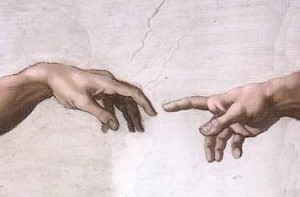What E.T. teaches us about Newtown
James Coplan, MD, continues his review of the OCA report on the shootings at Sandy Hook Elementary School, and introduces the concept of enmeshment.
Improbable as it may seem, the film E.T. holds a clue that is central to understanding of Adam Lanza’s behavior, which culminated in the triple tragedy of matricide, mass murder, and suicide. In the movie, E.T. is befriended by, and bonds with, Elliott, a 10 year old boy. Initially, E.T. mirrors Elliott’s behavior: Elliott screams when he first spots E.T.; E.T. screams back (thinking, perhaps, that this is how earthlings communicate). Elliott rubs his nose; E.T. mirrors that behavior as well. Soon, however, the situation is reversed, and it is Elliott who starts mirroring E.T.; whatever E.T. feels, Elliott feels as well. The bond is so strong that Elliott doesn’t even need to be in E.T.’s presence. Rather, E.T.’s influence over Elliott is transmitted telepathically. In one of the early scenes, E.T. gets drunk on a can of beer. Elliott, miles away at school, simultaneously becomes intoxicated. Back at home, E.T. switches on the TV and becomes mesmerized by a romantic movie. E.T.’s emotional reaction is channeled to Elliott, who impetuously kisses a female classmate. As the movie progresses, the relationship deepens, to the point where Elliott is not simply sharing E.T’s emotional reactions; rather, he has become a physical extension of E.T. E.T.’s health begins to fail, due to his encounters with Earth’s environment. Although earth is Elliott’s home, Elliott’s health likewise begins to fail. Worried by E.T.’s sickly appearance, Elliott’s brother Michael observes: “You know Elliott, he doesn’t look too good anymore,” to which Elliott replies: “Don’t say that. We’re fine.” Alarmed, Michael shoots back: “What’s all this ‘we’ stuff? You say ‘we’ all the time now!”
E.T.’s health continues to deteriorate; Elliott’s follows suit. Ultimately, Elliott announces “We’re sick. I think we’re dying.” As Elliott and E.T. lapse into coma, Michael attempts to explain what’s going on to one of the government scientists:
Michael: “He’s smart.” (referring to E.T.) “He communicates through Elliott.”
Scientist: “Elliott thinks its thoughts.”
Michael: “No. Elliott – Elliott feels his feelings.”
Film critics have described the connection between Elliott and E.T. as “a symbiotic, extra-sensory, shared telepathic relationship” ( http://www.filmsite.org/E.T.th2.html ). Setting aside the telepathic part, in family systems terminology, we refer to this type of relationship between two individuals as enmeshment: The thoughts and feelings of the two individuals have fused together into one entity, with obliteration of the normal personal boundaries. If one member of the enmeshed relationship is more powerful than the other, then the weaker member may lose their personal identity completely. We see this in the film: Elliott loses his own identity and becomes “taken over” by E.T. In a similar fashion, Adam Lanza appears to have lost his own identity, and was “taken over” by his mother. Actually, Adam was never permitted to establish his own identity in the first place.
More next time.
Start at the beginning of this series.
James Coplan, MD is an Internationally recognized clinician, author, and public speaker in the fields of early child development, early language development and autistic spectrum disorders. Stay connected, join Dr. Coplan on Facebook and Twitter.















Leave a Reply